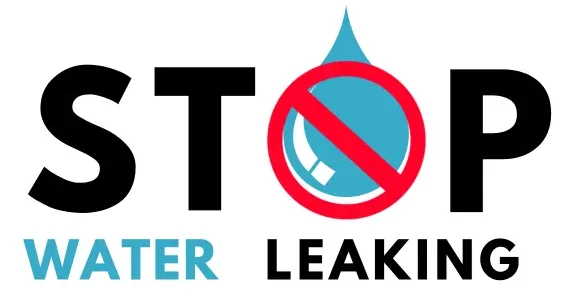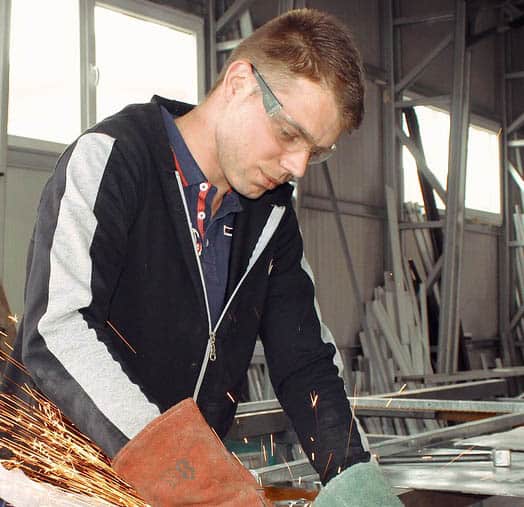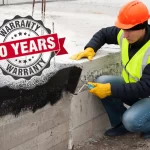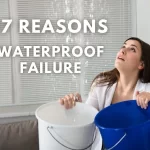Waterproofing the balcony is an essential thing to protect the enthusiasm of the building. We can use concrete or wood for construction. Normally balcony is in an open area. Hence it can get wet with rain and heat with sunlight. Due to this, its material can be cracked. During the rainwater can leak inside easily. So let’s see, how to waterproof the balcony within 07 steps.
Waterproofing a balcony can be done with liquid waterproofing membranes as well as sheet waterproofing membranes. This guide helps you to protect the balcony with water and guides you to protect it with waterproofing methods. There are methods, and many products are in the market, But you should select the best materials for your balcony.
Step 01: Provide a Cover to The Balcony
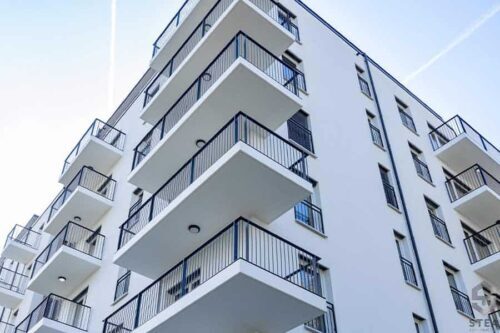
When you plan your house, you should pay attention to provide cover or roof to the top of the balcony. Then water will not directly flow on the floor. And if you own constructed home balcony, try to build it without damaging the enthusiastic view of the building.
If you have a slab, you can waterproof the slab using this guide
Step 02: Provide Water Removing Pipes
If your balcony is not with the water exit pipe, you should provide it. Else the balcony area will be flooded when it is raining. Due to this, damping can happen. If you already use the pipe and damping is happened to use a more diameter one. As much as possible, try to remove the water before penetrating the floor.
Step 03: Select Waterproofing Method
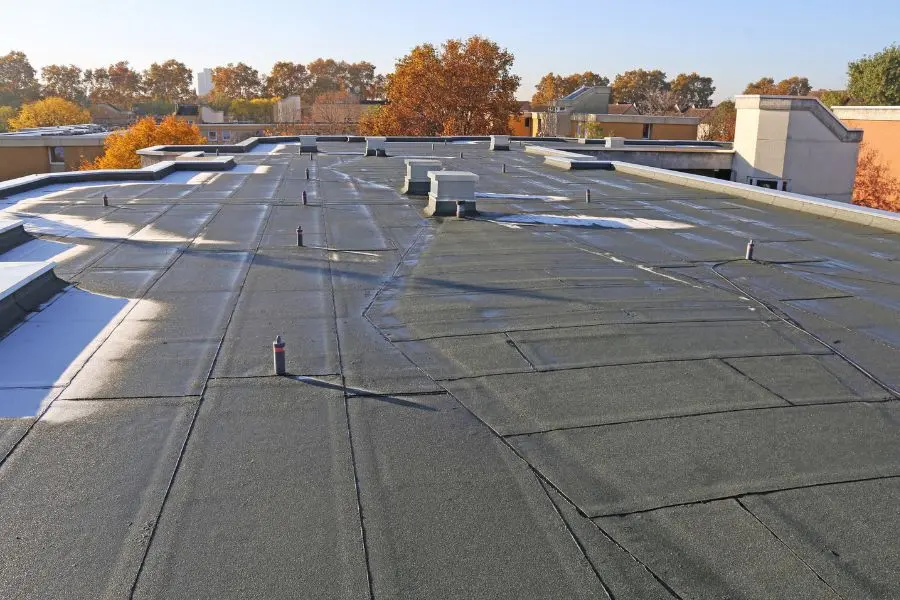
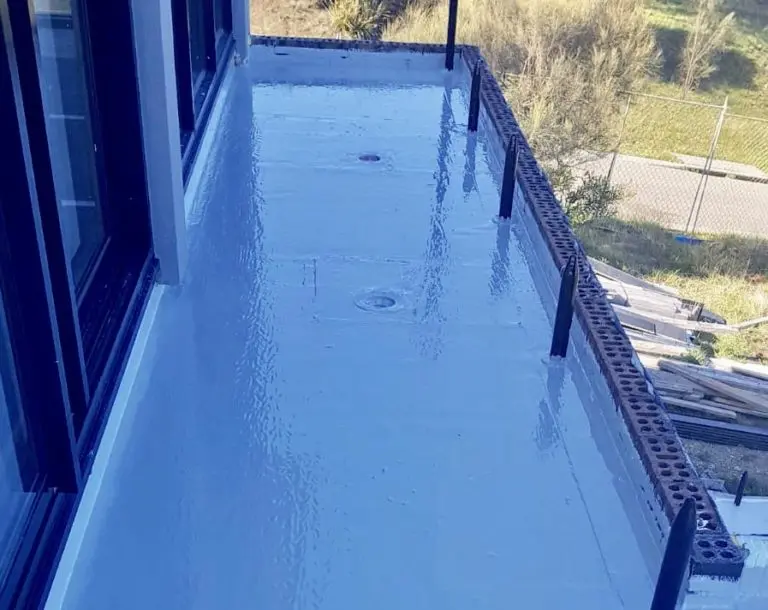
Image Source https://universaltradesman.com.au/
If you have done all the above 2 steps and also still water is leaking, you need to waterproof the balcony. There are many methods and types as well as there are more products in the market. So choose the best product and follow the method statement in the product.
When you select the waterproofing method, you should know about the waterproofing warranty also. If you hire someone, this will help you when there are any waterproofing failures.
According to the wood or concrete, you have to choose the different methods.
For Concrete Balconies
- Cementitious membranes
- Liquid membranes
- Bituminous membranes
- Sheet membranes
For Wood Balconies
- Use a weather coat on the floor.
- Sheet membranes
The wood balcony is a little bit difficult to maintain. Because it can get harmed by water, insects and many more, so you should waterproof the wood balcony when you build it.
Step 04: Clean the Area
Before starting the waterproofing process, the area should be clean. On the concrete floors, you need to prepare more adhesive surfaces for the priming. If the concrete slab is with plaster, remove it!
The reason is when the plaster is loosened with the environmental conditions, and then waterproofing also can be damaged. Due to this, it is better to remove the plaster.
After removing the plaster by chipping, use a wire brush for the extra surface preparation. Prepare the surface as clearly visible as the aggregate in the concrete. And if there are any cracks, you can use any sealant sausage to close the cracks from the top.
TIP – If you are going to use bituminous membranes or plastic sheets. No need to clean the surface too much. No need to fix small cracks.
Step 05: Apply the Primer Coat
You can use the primers according to the product that you have already selected. There will be method statements. When you use primer, always use the dry surface. Use brush, roller, or spray to spread the primer in on the surface.
Priming is provided better bonding of waterproof with structure surface. It will act as a bonding agent.
If you apply the bituminous base coating, lay it and keep it dries
Step 06: Apply the Waterproofing Layer
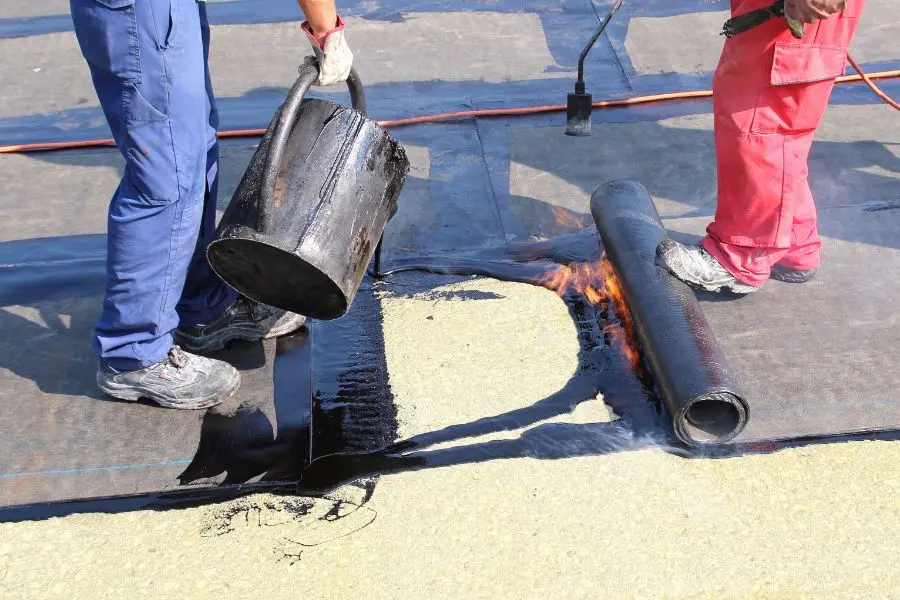
After the priming is applied you can apply the waterproofing coats to the surface. Before applying the waterproofing to the surface, make sure all area is fully covered with the primer.
Wood balcony waterproofing
Follow the below steps for wood balcony waterproofing
- Clean the area
- Remove unwanted nails etc
- Smooth the gaps in the joint
- Joint the woods with sealant and use fabrics
- Use the primer coat for the selected product
- Apply the waterproofing layers perpendicular
Parapet Walls
If there is any parapet wall on the balcony, it should be a waterproof minimum of 6”. And edges should be fillet using coating and fabrics.
Railing
If there is any railing on the balcony, carefully cove the rail bottom with the appropriate bonding agent and fabric. Do not keep the railing bottoms as it is because most water can be leaking with the bottom of the railings. Sometimes these rails can be drilled into the slab. So it is the way for water penetration.
Floor and Edges
After the priming is applied, you can cover all edges and also corners. Use a fabric-based bonding agent for the edge and corner waterproofing.
These are the 10 Best Building Waterproofing Methods that will help when you waterproof any building.
Step 07: Protect the Waterproofing
After the waterproofing is applied, you should protect it else it can be failed due to these 17 reasons. Do not do any drilling, scraping, moving, or hammering. So the inner layer will be damaged, and water will be leaked slowly. When the time comes, it can grow.
You should place a pipe to remove the flooded water on the balcony. It should be properly scaled, and when the rain is finished, water should be removed. And it should be a bit lay down to the floor more than its thickness. Else water amount will remain due to the thickness of the pipe, and the area will be a pool.
Related Topics
